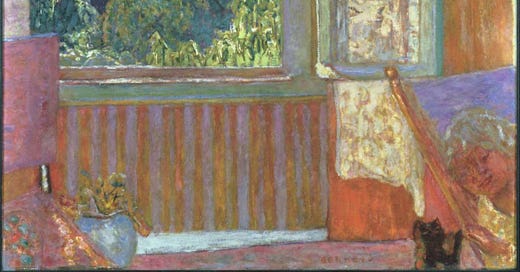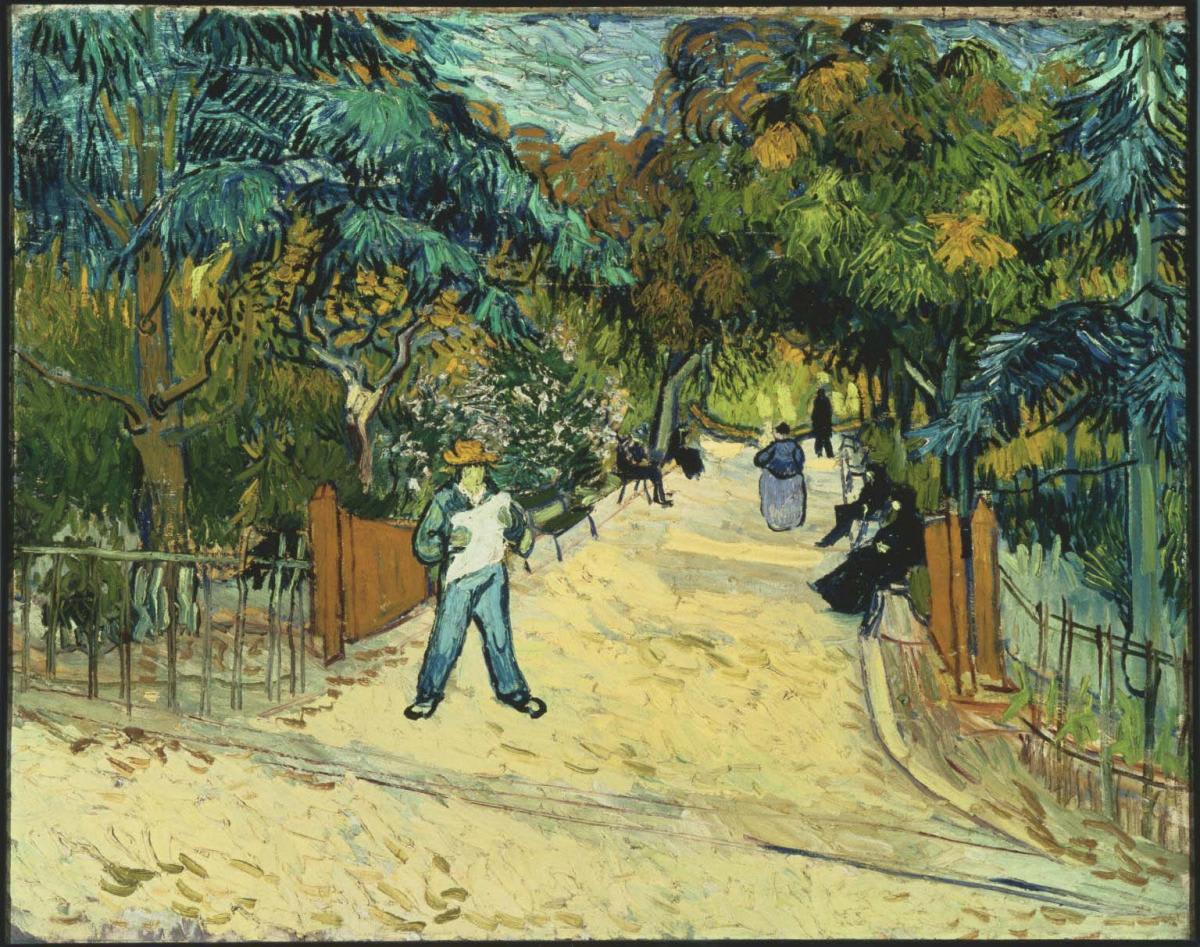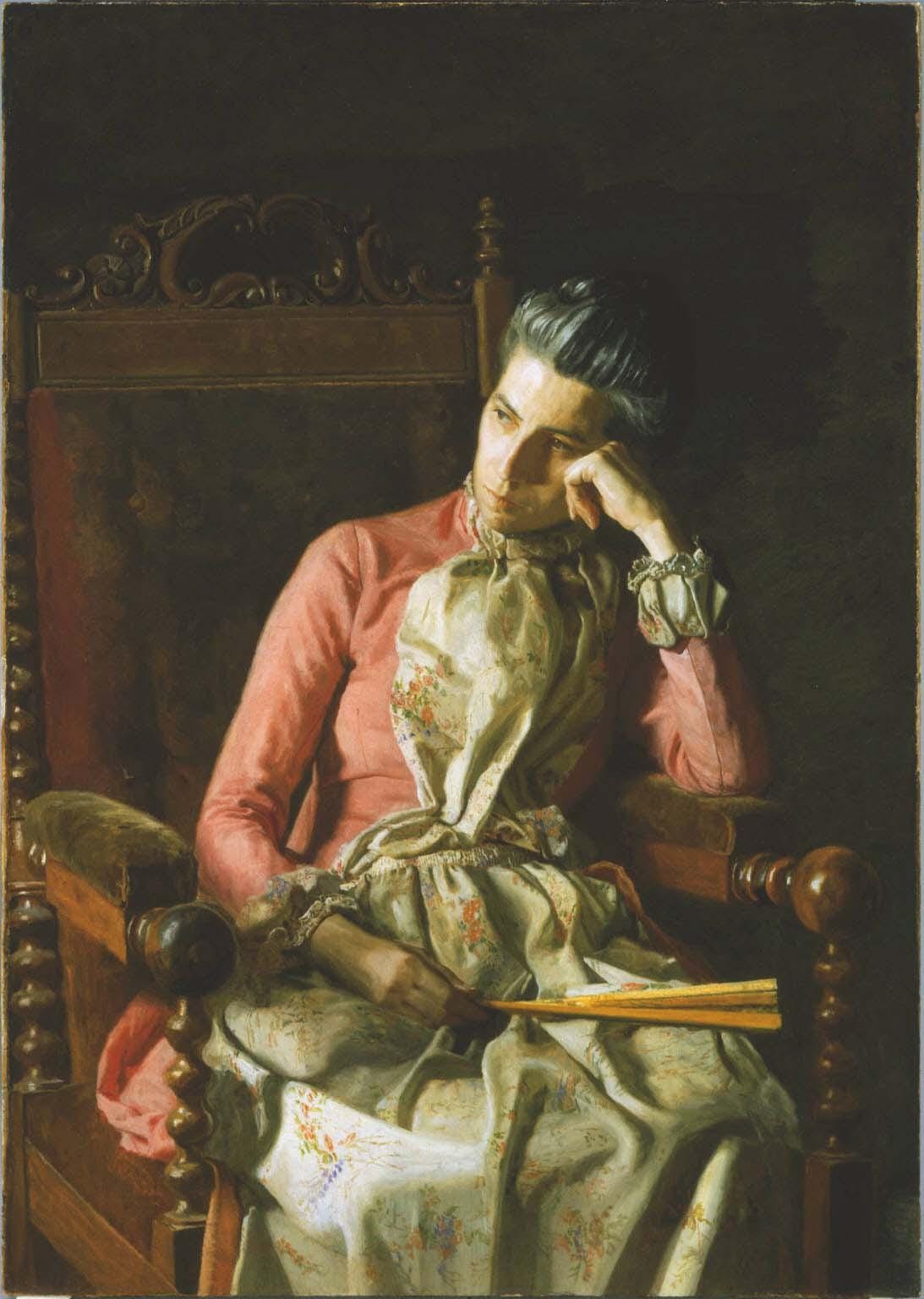The Best of What's Around: Pierre Bonnard, and Others, at the Phillips Collection
An extraordinary temporary exhibition and a remarkable permanent collection
Note: This post can be read on a phone, but the paintings described below are more interesting and compelling on a device with a larger screen.
An easy one block walk from the north entrance to the Dupont Circle Metro Station, the Phillips Collection, 1600 21st Street, N.W., Washington, D.C., is an overlooked cultural treasure. In 1926, art collector and founder Duncan Phillips (1886-1966), described the collection in his townhouse as, “an intimate museum combined with an experiment station.”
Other art museums are grander, but the Phillips Collection is an unmatched combination of manageability, great art, and fun. With due respect to museum acquisition committees, there is something special about a small museum, like the Phillips Collection, that reflects the tastes and passions of its founder. You can find out more about the Phillips Collection
Duncan Phillips knew and admired the French painter Pierre Bonnard (1867-1947) and avidly collected his work. A special exhibition, Bonnard’s Worlds, is at the Phillips Collection until June 2, and it is an exceptional experience. The Bonnard show was organized by the Phillips Collection and the Kimbell Museum of Fort Worth, Texas and those two museums will be the only places it can be seen.
There are also many exceptional works in the remainder of the museum and many of these were directly acquired by Duncan Phillips during his long career as a collector.
What follows are reasons to visit the Phillips Collection right away (or at least before June 2) and a suggestion or two about seeing the permanent collection.
Bonnard’s Worlds: Why It Is Worth Visiting the Phillips Soon
Bonnard’s Worlds is organized by gathering Bonnard’s paintings of topics he returned to repeatedly, for example, gardens, street views and domestic scenes. We see how Bonnard treated similar scenes and subjects at different points in his career.
Bonnard’s paintings seem to be those of an ultra-caffeinated Impressionist. He detonated colors, particularly yellow, on his canvases. The signature painting for the Bonnard’s World show is The Open Window. Bonnard painted this painting in 1921 and Duncan Phillips acquired it in 1930.
The Open Window combines color, perspective, nature and domesticity. Our eyes move between the colorful interior and the blue expanse of the exterior sky. Bonnard’s companion and a black cat occupy the lower right corner of the painting.
The Washington Post’s underappreciated art critic, Sebastian Smee, published a thoughtful review of Bonnard’s Worlds on March 27. You can read it
Why It Is Worth Visiting the Phillips Collection Anytime
My mother retired as a high school librarian and dedicated herself to serving as a docent at the Detroit Institute of Arts. She spent innumerable hours learning about the DIA’s permanent collection and preparing tours for special exhibitions. Her DIA tours ranged from groups assembled on the spot to students on field trips to ethnic clubs or social groups of almost every kind.
When we were about to visit the DIA, or another museum, she would say, “I’m going to ask you at lunch (or dinner) to assume that, with legal and financial considerations magically solved, which three works we saw today you would like delivered to you this evening.”
This fabulous question concentrated our attention and made for great post-museum conversation. Mom’s question was more nuanced than it seemed: some artworks, for example the massive sculptures of Alexander Calder or Richard Serra, or a huge work such as Pablo Picasso’s Guernica, are intended for, and must be displayed in, public places. In other words, great art may not necessarily be art you can live with.
So, in Mom’s memory, here are two more paintings from the Phillips Collection that, along with The Open Window, can be delivered to my house anytime.
Entrance to the Public Gardens at Arles by Vincent Van Gogh
Many visitors go to the Phillips Collection to see Pierre Auguste Renoir’s masterpiece, The Luncheon of the Boating Party, which is given pride of place on the museum’s second floor—it is visible from a number of angles. You can read more about that painting in a January 2022 About Alexandria post archived under The Best of What’s Around.
Visitors to the Phillips Collection often cluster around The Luncheon of the Boating Party and deservedly so. However, in a room a few steps away you can spend as much time as you like with several spectacular paintings by Vincent Van Gogh (1853-1890). Here is Van Gogh’s Entrance to the Public Gardens at Arles which he painted in 1888:
Duncan Phillips acquired this painting in 1930. It shows Van Gogh’s heavy brush work, layering of paint, and use of color in ways that make his paintings unmistakable, even from a distance.
Here is how Duncan Phillips saw Entrance to the Public Gardens at Arles as described in the museum’s helpful website:
It is an outcry of the soul, that canvas, a shout of triumph, of joy in the sun, of thanks to God, for a brush and some good pigments wherewith to surpass the light of life itself in intensity. How to catch that pulse in nature, the repetition of certain shapes, the wave-like ripples of the heat, the saturated glare of the soil along the garden walk, the pungent, aromatic fragrance, the scintillant, opulent colors, blues and greens, yellows and oranges in full cry under the sun, the trees of many shapes and textures at the depths at which one could plunge and find shelter in the inner recesses of dark, cool shadow.
Portrait of Miss Amelia Van Buren by Thomas Eakins
Turn a corner in the east parlor of the original Phillips house and you face Thomas Eakins’ (1844-1916) portrait of Miss Amelia Van Buren, his friend and student. Eakins painted many formal portraits of Philadelphia’s elite, but this 1891 portrait is striking in what it reveals about Miss Van Buren. Duncan Phillips acquired this painting in 1927.
Unlike the common portrait pose where the subject looks directly at us, Ms. Van Buren looks to her right and props up her head with her left hand and looks to the light entering the painting from the left. Is she preoccupied or just bored at the prospect of sitting for her portrait or is she just thinking? She holds a fan in her left hand and her hair, which may be going grey, is severely pulled back in the least fussy style possible. Miss Van Buren is all business. Eakins depicts the folds and shadows of her expensive clothes with surpassing skill.
The delights of the Bonnard show, and the treasures of permanent collection such as Entrance to the Public Gardens at Arles and Portrait of Miss Amelia Van Buren, make it worth visiting the Phillips Collection very soon.







It's rare and gratifying to read both the writer's opinion of art works and something of the art education that informs those opinions.
What a great way to spend a day in DC! Thank you for the memories!